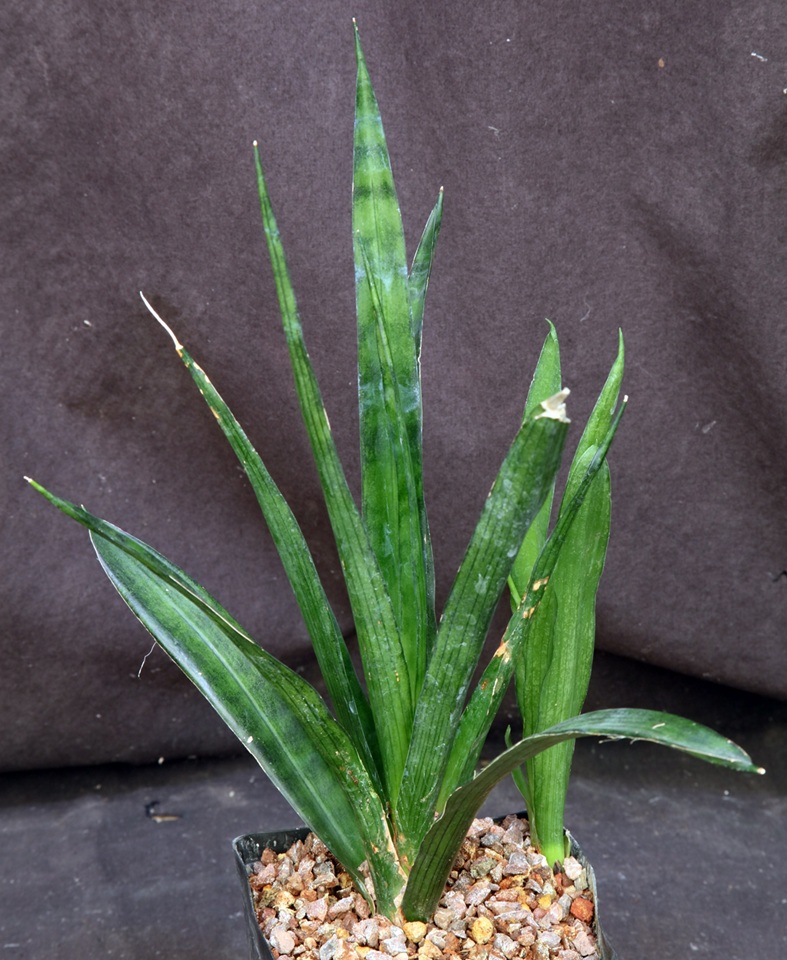| Protologue: |
Synopsis Plantarum Succulentarum 67 (1812). |
| Etymology: |
The epithet of this species refers to the large and pointed leaf tips. |
| Subgenus: |
Sansevieria |
| Group: |
not considered a viable species |
| Distribution: |
Unknown. |
| Brief Description: |
This is a rather small acaulescent and rhizomatous species with 5 - 15 erect or ascending-spreading leaves that are linear-lanceolate. The flexible leaves are 15 - 45 cm long by 1.2 - 3 cm across, and they are narrowed downwards to a channelled petiole that is up to 15 cm long. The leaves have alternating bands of dull dark and lighter green, and 5 - 7 longitudinal dark green lines or grooves decorate the leaf bases. The smooth leaves narrow to a green flexible tip over as much as the last 2 inches of the leaves. The leaf margins are green. The flower characteristics are not known. |
| Similar Species: |
This is somewhat of a mystery species that has been confused with a number of other species ranging from Sansevieria parva to S. burmanica, S. aethiopica, and S. roxburgiana. These other species come from widely dispersed areas, suggesting that Sansevieria grandicuspis likely should not be considered a valid species. In addition, there is no type specimen in what remains of Haworth's herbarium. We have no idea where the plants distributed in cultivation under this name originated. One possibility is that this is a form of Sansevieria burmanica, which was introduced for fiber production in East Africa. |
| |
| |

Sansevieria grandicuspis in cultivation.
|

